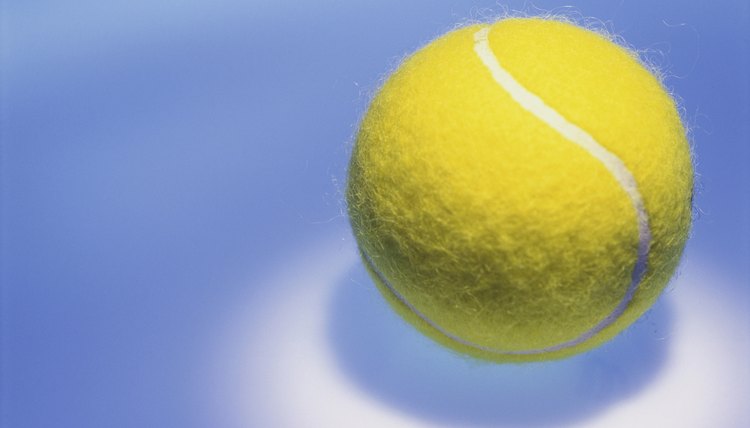How to Relieve Hip Bursitis With a Tennis Ball

Hip bursitis occurs when the fluid-filled bursae -- small, cushionlike pockets around the hip joint -- become inflamed due to repetitive motions. Hip bursitis is commonly caused by repetitive strain due to sports or exercise. Trigger point therapy and self-massage using a tennis ball can be incredibly effective at relieving pain and pressure associated with hip bursitis. A tennis ball is most commonly used because it is both sturdy and pliant, although another type of ball could be used in place of a tennis ball to perform the trigger point release exercises.
Lie on the ground with the tennis ball next to you or in your hand.
Roll onto your side with your hips stacked.
Place the tennis ball under the buttocks right below the hips. You may feel an intense sensation due to the sensitivity of the gluteus and piriformis muscles along the buttocks. This is a normal sensation that may feel uncomfortable. While you may feel intense sensation, you should not feel intense pain. Remove the tennis ball from under the hips if you are in pain.
Roll your hips and buttocks area over the tennis ball lightly and slowly to massage the deep tissues and muscular trigger points.
After 15 to 20 minutes, roll over and repeat the process on the other side.
Tips
Perform the tennis ball massage up against a wall or door. Stand next to the wall with one hip touching the wall. Place the tennis ball under the hip and roll the ball under the hips and around the buttocks.
References
Tips
- Perform the tennis ball massage up against a wall or door. Stand next to the wall with one hip touching the wall. Place the tennis ball under the hip and roll the ball under the hips and around the buttocks.
Writer Bio
Nicole Carlin is a registered yoga teacher. Her writing has been published in yoga and dance teacher training manuals for POP Fizz Academy. Carlin received a Masters of Arts in gender studies from Birkbeck University in London and a Bachelors of Arts in psychology from Temple University, Philadelphia.
